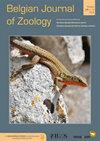科特迪瓦(西非)三个主要生态区引进和潜在入侵蚂蚁物种的多样性和分布
IF 1.1
4区 生物学
Q2 ZOOLOGY
引用次数: 6
摘要
生物多样性保护的一个重要问题是早期发现引进和入侵生物,并确定可能是引进点或特别容易入侵的区域。在昆虫中,蚂蚁很容易被人类传播到世界各地,一些物种,如双尾扶正蚁(Solenopsis geminata)或大头蚁(Pheidole megacephala),可能具有高度侵入性。为了建立科特迪瓦(西非)城市蚂蚁监测的初步基线,使用金枪鱼诱饵作为抽样方法对分布在该国三个主要生态区的15个城市进行了调查。共采集到蚂蚁5亚科22属103种。我们确定了10种潜在的入侵物种,其中有2种是该国的新种:双尾扶桑和球状扶桑。另一种高度入侵物种长角拟龙是全国最丰富的物种。潜在入侵蚁种与非入侵蚁种共存,并对所有采样城市生境的蚁群结构起重要作用。目前的研究提供的证据表明,在科特迪瓦的城市中已经建立了引进和入侵的蚂蚁物种,通常数量很多,并且发生在大面积的入侵地区。本文章由计算机程序翻译,如有差异,请以英文原文为准。
Diversity and distribution of introduced and potentially invasive ant species from the three main ecoregions of Côte d’Ivoire (West Africa)
An important issue in biodiversity conservation is the early detection of introduced and invasive organisms and identification of regions that may either be points of introduction or be particularly prone to invasion. Among insects, ants are easily transported worldwide by humans, and several species, such as Solenopsis geminata or Pheidole megacephala , can be highly invasive. To establish an initial baseline for urban ant monitoring in Cote d’Ivoire (Western Africa), fifteen cities - equally distributed over the three main ecoregions of the country - were surveyed using tuna baits as sampling method. A total of 103 ant species from 22 genera and 5 subfamilies were collected. We identified 10 potentially invasive species, amongst them two new species for the country: Solenopsis geminata and Solenopsis globularia . Another highly invasive species, Paratrechina longicornis , was the most abundant species collected throughout the country. Potentially invasive ant species co-occurred with non-invasive species, and contributed importantly to the structure of ant assemblages of all sampled urban habitats. The present study provides evidence that introduced and invasive ant species are established in cities of Cote d’Ivoire, often in high numbers and are occurring over large areas of invasion.
求助全文
通过发布文献求助,成功后即可免费获取论文全文。
去求助
来源期刊

Belgian Journal of Zoology
生物-动物学
CiteScore
1.90
自引率
0.00%
发文量
10
审稿时长
>12 weeks
期刊介绍:
The Belgian Journal of Zoology is an open access journal publishing high-quality research papers in English that are original, of broad interest and hypothesis-driven. Manuscripts on all aspects of zoology are considered, including anatomy, behaviour, developmental biology, ecology, evolution, genetics, genomics and physiology. Manuscripts on veterinary topics are outside of the journal’s scope. The Belgian Journal of Zoology also welcomes reviews, especially from complex or poorly understood research fields in zoology. The Belgian Journal of Zoology does no longer publish purely taxonomic papers. Surveys and reports on novel or invasive animal species for Belgium are considered only if sufficient new biological or biogeographic information is included.
 求助内容:
求助内容: 应助结果提醒方式:
应助结果提醒方式:


